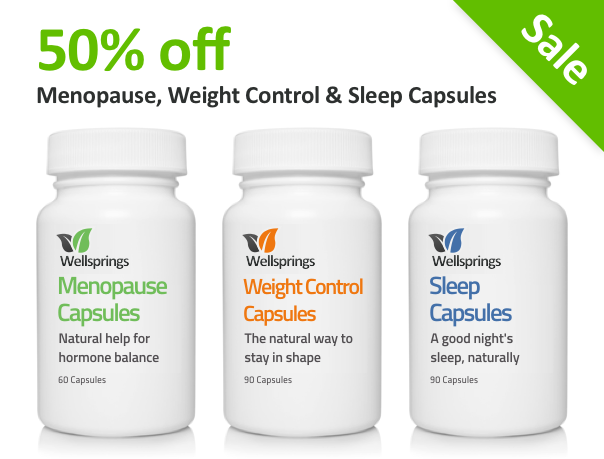How To Help Hot Flushes
Hot flushes and menopause go together, but there are some simple tips that can help you get them under control.
First remember you are definitely not alone as at least three quarters of women will experience hot flushes at some point during the menopause.
Not just then either as they can occur in pregnancy and also after treatment for cancer in both men and women.
What can trigger hot flushes?
You will have your own personal triggers so it really helps to make note of when they occur and what you were doing just before them in terms of mood, stress and what food or drink you have just had as these can all set them off.
Although some lucky women escape completely, there are some very good reasons why we experience the heat that we associate with menopause:
1. Blood Vessels
Hot flushes occur when the blood vessels below the skin dilate. This causes more blood to rush to the skin’s surface, and that is what makes you look red and flushed, and feel that tell-tale rise in temperature.
The body’s normal response to this is to try and cool you down, and it does this by making you sweat. What is unique about hot flushes is that this mechanism kicks in when the outside temperature can be very low and you do not have any signs of fever.
2. Fluctuating hormones
Well you know all about this during menopause, and in fact it’s the changing levels of your hormones are the prime cause of hot flushes, rather than the actual hormones themselves.
When your hormone levels fluctuate they cause the temperature control mechanism in the body to be disturbed. The centre which controls this is in a part of the brain called the hypothalamus and it seems that it is changing levels of oestrogen and FSH (follicular stimulating hormone) that can upset this delicate balance and cause hot flushes.
Women having hot flushes usually have decreased oestrogen levels and increased FSH levels, and usually low progesterone too. However it is important to remember that it is the changes and fluctuations in the hormone levels – rather than the actual amount of hormone being produced – that produces hot flashes.
3. Surgical menopause
It is to be expected that menopause symptoms come naturally when a woman’s childbearing years are coming to a close and the menopause or perimenopause is under way.
However, women who have a hysterectomy or their ovaries removed at an age when they would not normally be going through menopause are more likely to experience more severe and frequent hot flushes after the surgery than in a natural menopause transition.
Even if the ovaries are retained it is no guarantee that an early menopause will not occur, as their effectiveness at producing progesterone will be affected and will diminish over time.
Helpful tips
A good place to start is with your diet, and avoid any triggers and these can be general like caffeine or something personal to you that just sets off a flush.
Carrying any excess weight won’t help either so if you are looking to lose a few pounds then try a healthy diet such the DASH Mediterranean diet as it has been shown to decrease the number of flushes, when compared to women on diets high in fat and sugar.
If you know you are oestrogen dominant then you can try a diet specifically to help that and low blood sugar too can be a trigger so make sure you are eating regularly and not skipping meals.
If you don’t drink enough water that can also be a trigger for flushes and it has to be uncarbonated as the fizz can make flushes worse too. Tea, coffee and fruit juices don’t count here it has to be water and plenty of it.
Bioidentical hormones and herbal supplements can help; but some herbs can have interactions with medications. Black cohosh for example is not recommended for anyone with liver disease but that many women find helpful and safe in small doses for hot flushes.
Evening primrose oil again is found helpful, but not recommended if you are taking blood thinner medication.
Other products women have found helpful for hot flushes are those containing plant oestrogens and Ashwaganda is a herb increasingly used in the USA to help with flushes and also to reduce the anxiety that is also a common feature of menopause.
Helpful information:
If your flushes are severe, such as also having night sweats, additional help may be needed.
A combination cream such as 20-1 with both progesterone and oestrogen can be more effective in these cases than progesterone alone.
If you are unable to use oestrogen then a progesterone only cream like Serenity can be combined with Wellsprings Menopause Support Capsules. These have been specifically designed to support reducing flushes without oestrogen and can be used together with biohormone creams.

















